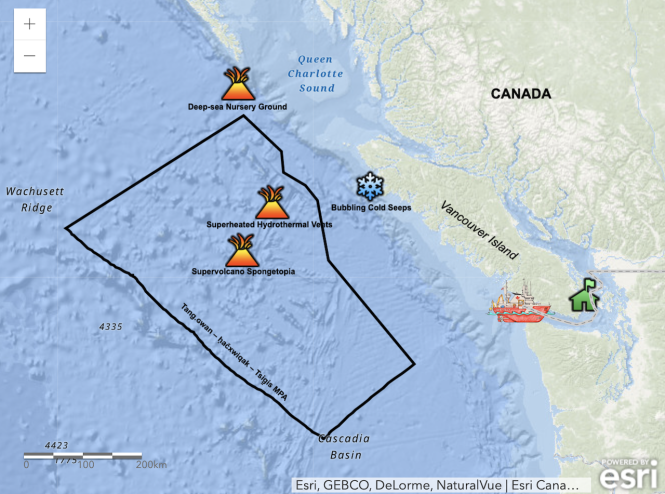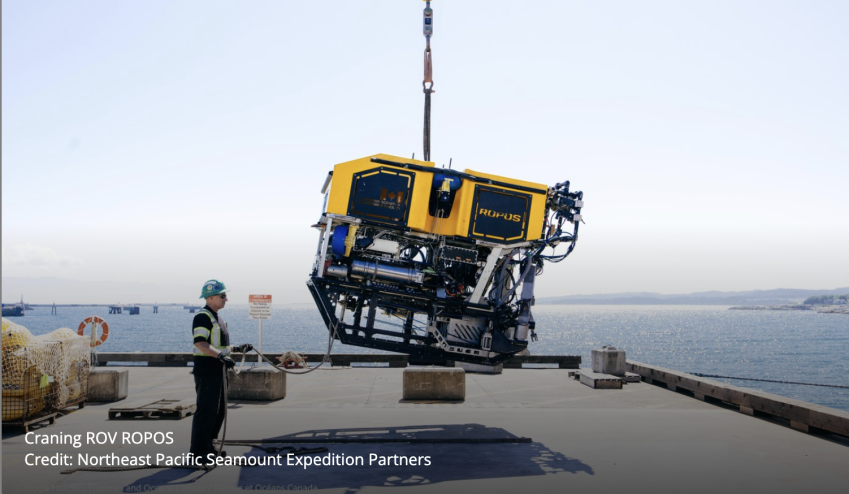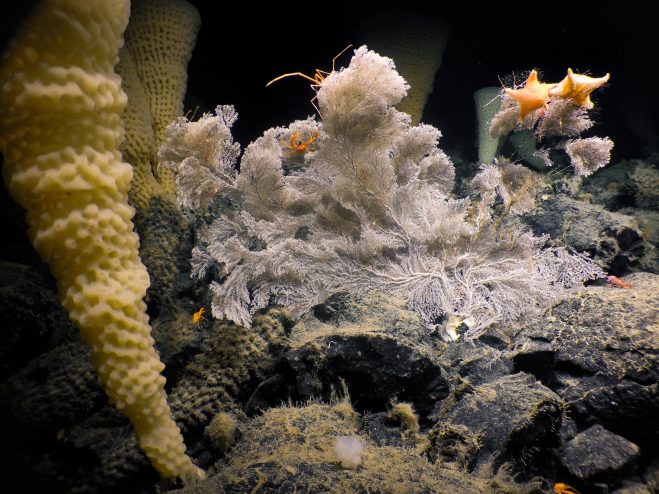People come from around the world to see all the wonders the Island has to offer, but even for locals, there are some things we’ve yet to witness.
This is especially true below the waters we’re surrounded by.
Undiscovered terrain is abundant beneath the waves, and one deep-sea expedition has just captured the first-ever footage of the prolific ecosystem thriving below a new proposed Marine Protected Area (MPA).
Found just 150 km west of the island, in the proposed Tang. Gwan-hacxwiqak-Tsigis (tung-gwun huch/kiwi/kuk see-geese) MPA is new ground for researchers.

“There are no ecosystems like this anywhere else on Earth,” Moronke Harris, a University of Victoria oceanography PhD student aboard the expedition, told BlackPress Media.
“The deep sea is the most unique area that we have. It’s the most unexplored area that we have.”
Researchers for the Northeast Pacific Deep-sea Expedition aboard the John P. Tully Canadian Coast Guard vessel lowered the Remotely Operated Vehicle for Ocean Sciences to record depths in the Canadian waters – surpassing 3,200 metres deep.

They encountered an array of almost magical topography and species on the way.
A host of hydrothermal vents, superheated geysers, formed from tectonic plate movement. Bubbling cold seeps, which form when cracks in the ocean floor release streams of methane bubbles and create a home for rich microbial and animal communities. And undersea mountains like the two-and-a-half kilometre tall Explorer supervolcano.
“It’s globally rare for these ecosystems to occur together in the same spot and in really high densities in the way they occur in the waters of British Columbia,” said Harris.
“It’s going to inform marine conversation because these are really fragile and really remarkable ecosystems.”

Beyond the actual topography, a range of stunning species were captured on film displaying behaviours that will continue to be examined.
For example, a Pacific white skate was captured laying an egg for the first time, tucked with hundreds of other eggs on the warm hydrothermal vents.
Researchers speculated that the skates swim up to lay their eggs on the seamounts because it helps speed up the years-long gestation process, effectively incubating them.
Researchers also collected microbial samples growing on the vents. They plan to explore their potential anti-viral and anti-cancer properties. The expedition collected hundreds of specimens of likely rare and undescribed species which will continue to be examined.
Local indigenous communities made the mission possible, Rayne Boyco, a marine planner with the Haida Nation, spoke of how it felt to see everything for the first time.
“For thousands of years, our people knew these areas were really special and worth protecting,” she said.
“It just blows your mind because you’re seeing this for the first time maybe ever, and it makes you quite emotional,” Boyco said, adding sights like a baleen whale skeleton left them speechless. “We were all losing our minds a little bit and every dive was something new.”
Soon you will be able to lose your mind a little bit, too – from the comfort of your living room.
The never-before-seen footage they captured could soon star in a BBC nature series.
Until then, you can check out more on the expedition on Twitter, or directly through their webpage.
Here’s a sneak peek of some stunning footage in the video below!










